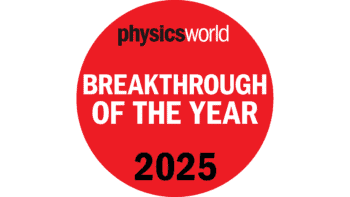Welcome to the latest in a new series of sponsored articles showcasing some of the latest white papers and webinars from physics-based businesses around the world

This time we are featuring two white papers from Mad City Labs and Edinburgh Instruments
Making sense of viruses

Single-molecule microscopy techniques allow researchers to directly study molecular mechanisms, enabling them to boost our understanding of, for example, how biological viruses assemble, disassemble and interact with their hosts. In the new white paper from Mad City Labs, entitled Understanding Virus Mechanisms – One Particle At A Time, you can discover how Tijana Ivanovic from Brandeis University in the US has been using the company’s equipment to understand cell entry mechanisms and the relationship between the structure and organization of a virus particle and the early steps of infection. With her lab having studied viruses ranging from those responsible for Ebola to COVID-19, the white paper shows how these single-molecule techniques allow you to measure the “trajectories” of individual molecules in a population.
Studying quantum dots

Semiconductor quantum dots have unique tuneable photoluminescence properties, which make them ideal for a range of important technological applications including solid-state lighting, displays, photovoltaics, and biomedical imaging. Indium-phosphide quantum dots are of particular interest as an environmentally friendly and non-toxic alternative to traditional heavy metal-based quantum dots containing cadmium and lead. Although indium-phosphide quantum dots do not emit light on their own, they can do this if coated with a layer of zinc sulphide. In this latest white paper from Edinburgh Instruments, entitled Emission Tail of Indium Phosphide Quantum Dots Investigated using the FS5 Spectrofluorometer, you can find out how one of the company’s spectrofluorometers was used to characterize the absorbance, emission and lifetime of such indium-phosphide/zinc-selenide quantum dots, thereby helping to establish important structure–property relationships.



